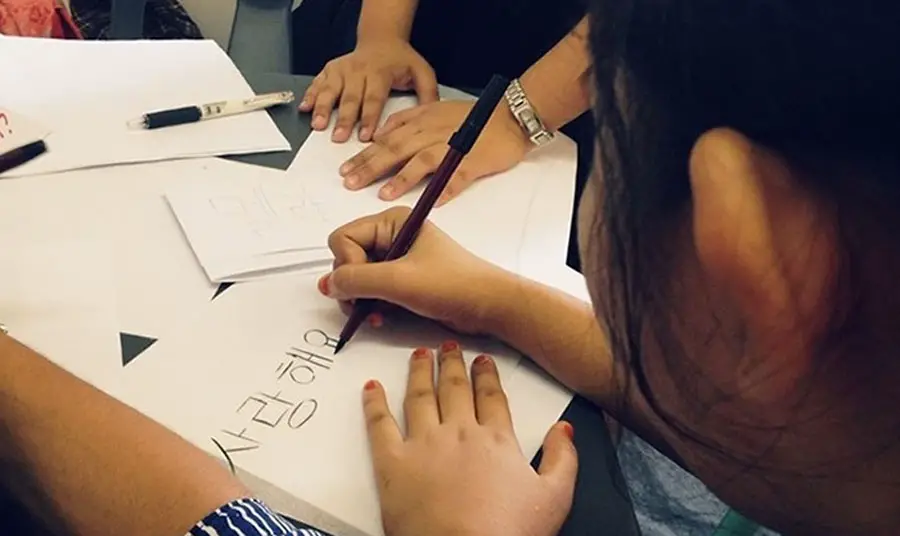South Korea has been more than influential not just in culture, clothing, and music, but also with their national official language. A lot of Filipinos are getting hooked to Korean trends and a lot of youngsters seem to follow.
Moreover, a lot of Filipino kids nowadays patronize Korean-Pop (K-Pop music) because of their funky, cheerful, and fun beat. This can be the main reason why the Korean language was announced to be taught to public high schools last year.
An agreement between the Department of Education (DepEd) and the Embassy of the Republic of Korea was signed last year and is going to be effective this next school year.
Read: Anti-Profanity Ordinance, Successfully Passed in Baguio
Korean Ambassador Kim Jae Shin and DepEd Secretary Leonor Briones were successful in signing a Memorandum of Agreement last 21st of June, 2017 which were ought to start last year and would be started by ten (10) Metro Manila high schools.

However, no news were given as regards the updates of this until November of this year.
DepEd named the ten (10) public high schools which will implement the Korean language starting this semester in a tweet last Thursday, the 15th of November 2018. These high schools are:
- Jose Abad Santos High School
- Kalayaan National High School
- Pasay City National Science High School
- Maligaya High School
- San Bartolome High School
- Las Pinas National High School
- Judge Feliciano Belmonte Sr. High School
- North Fairview High School
- Lagro High School
- Makati High School
DepEd Secretary Leonor Briones said that the students who’ll be under this Special Program in Foreign Language are expected to have and develop skills in all aspects of the language which include reading, writing, speaking, listening, and comprehending.
“This is not a beginning. This is a continuation of very long years of fruitful relationship, including the field of education, between Korea and the Republic of the Philippines.”
Other than Briones, Korean Ambassador Kim Jae Shin was also happy that they’ll be able to spread their culture to neighboring countries to further develop relationships. According to him, this program is aiming to give aid to Filipino people to have better responses to employment and educational opportunities in both abroad and in the country.
Read: OFWs can Avail Free TESDA Tech-Voc Education Upon Airport Arrival
“I’m very happy that Korean language is added as one of the second foreign languages. Language is very important so teaching and studying [foreign languages] in schools is very helpful to deepen the bilateral understanding between the two nations.”
The agreement was signed last year and this next school year might be when this will be imposed. Patricia Santos, SPFL-Korean Language of DepEd focal person said that eight (8) schools in Region IV-A would offer Korean language courses soon.
“The Korean Embassy agreed to more schools coming from Region IV-A, so there are eight schools. However, these schools do not implement SPFL-Korean yet, because the teachers are still undergoing training.”
What relevance does it have to learn other languages?
Other than the fact that it opens a lot of career opportunities, it also enhances a person’s ability to communicate. Since learning a language requires active listening and comprehension, it’s a good tool to improve a person’s social characteristics.
In addition to that, a benefit of learning more than one (1) language decreases the risk of dementia and Alzheimer’s disease. There are studies that show that people who only know one language has an earlier risk of dementia at 71.4. While those people who speak two (2) or more languages experience signs at 75.5.
Read: DepEd Sets Age Limit For Kindergarten Students
If you think that that’s it, think again. Learning to speak another language also improves a person’s memory. Learning a language pulls an individual’s focus to the mechanics of everything that revolves around that language. This exercises the brain overall which strengthens the muscle of the brain.
Last but not the least is that learning a new language improves a person’s decision-making skills. Studies have shown that bilinguals or people who are fluent in more than one language tend to make more rational decisions. Furthermore, they’re more confident with their decisions due to the fact that they’ve finished studying the situation more effeectively than those who are monolingual.
What other languages are under the SPFL?
If you think that the Korean language is the sole language in this program, think again. As a matter of fact, the SPFL was first implemented last 2009 to prepare students to have a more comfortable workspace globally. Other languages that the program offers are: Spanish, French, Chinese (Mandarin), Japanese (Nihongo), and German.
Learning a new language might be difficult. As a matter of fact, it could be more difficult than finding a job. However, doing great and being fluent on a new language not only opens a lot of opportunities for employment both here in the country and in abroad, but it also invokes a greater purpose in improving a person’s motor skills.